Published Jack Cochran on October 23, 2017
As mentioned in my previous blog post, ASTM D8071-17: Standard Test Method for Determination of Hydrocarbon Group Types and Select Hydrocarbon and Oxygenate Compounds in Automotive Spark-Ignition Engine Fuel Using Gas Chromatography with Vacuum Ultraviolet Absorption Spectroscopy Detection (GC-VUV) uses an initial oven temperature start of 35°C, which can be hard to achieve for labs where room temperatures are warm. Hopefully in that post I convinced you that the potential exists for easing the initial oven temperature up from 35 to 40°C to shorten the GC oven cool-down time by comparing gasoline numbers generated from both oven start temperatures. As my colleagues have pointed out though, I should have started with evidence from the analyses of the System Validation Mixture for D8071, a quantitative blend of numerous gasoline components. Of course, anytime I do PIONA GC analysis, I start by verifying that the System Validation Mixture, affectionately called “VUV1” in our laboratory, meets our specification.
Figure 1 is a chromatogram of “VUV1”, the System Validation Mixture, with some key components labeled.

Figure 1. GC-VUV chromatogram of the ASTM D8071 System Validation Mixture with some of the key components labeled.
Figures 2 and 3 demonstrate that PIONA results (Paraffins, Isoparaffins, Olefins, Naphthenes, Aromatics) for the System Validation Mixture analyzed with GC oven starts of 35°C and 40°C compare quite favorably.
The same can be said for individual compound results (Figure 4). All results “Pass” our current specifications.

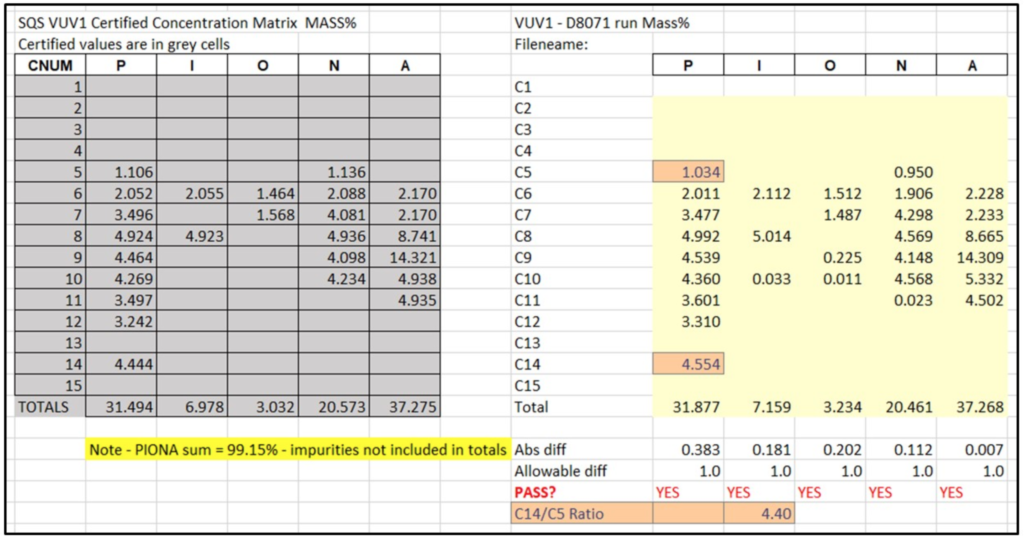
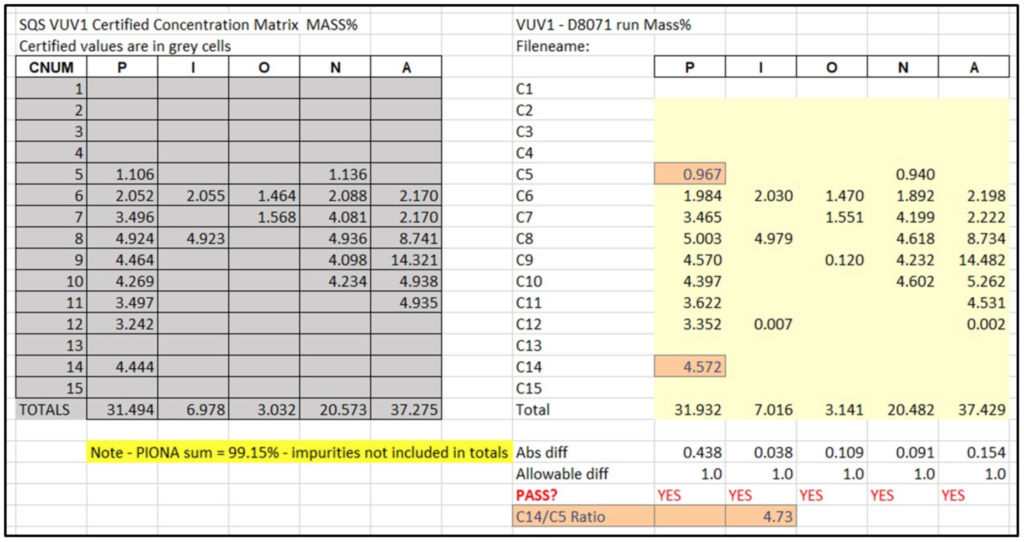
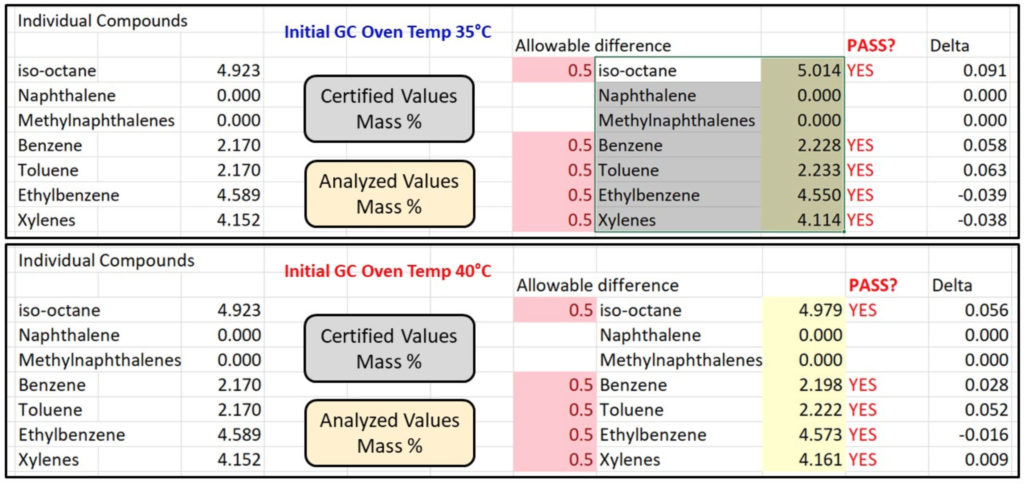

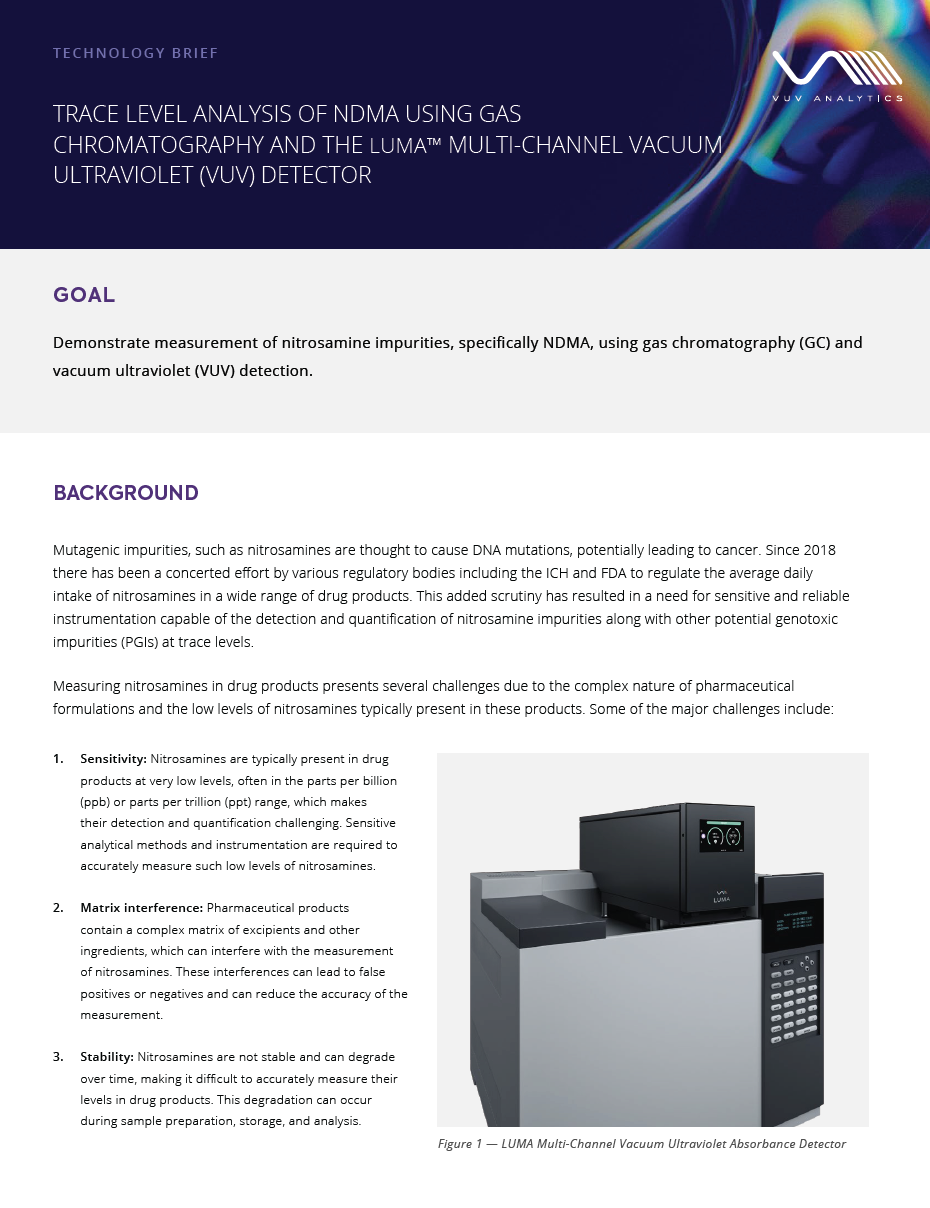
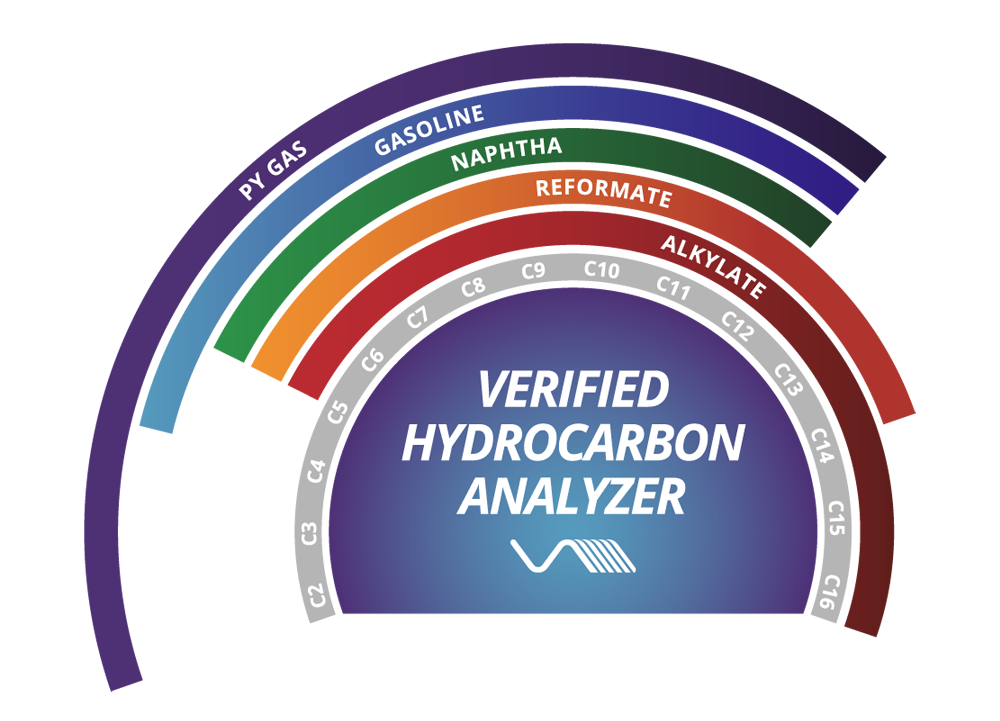
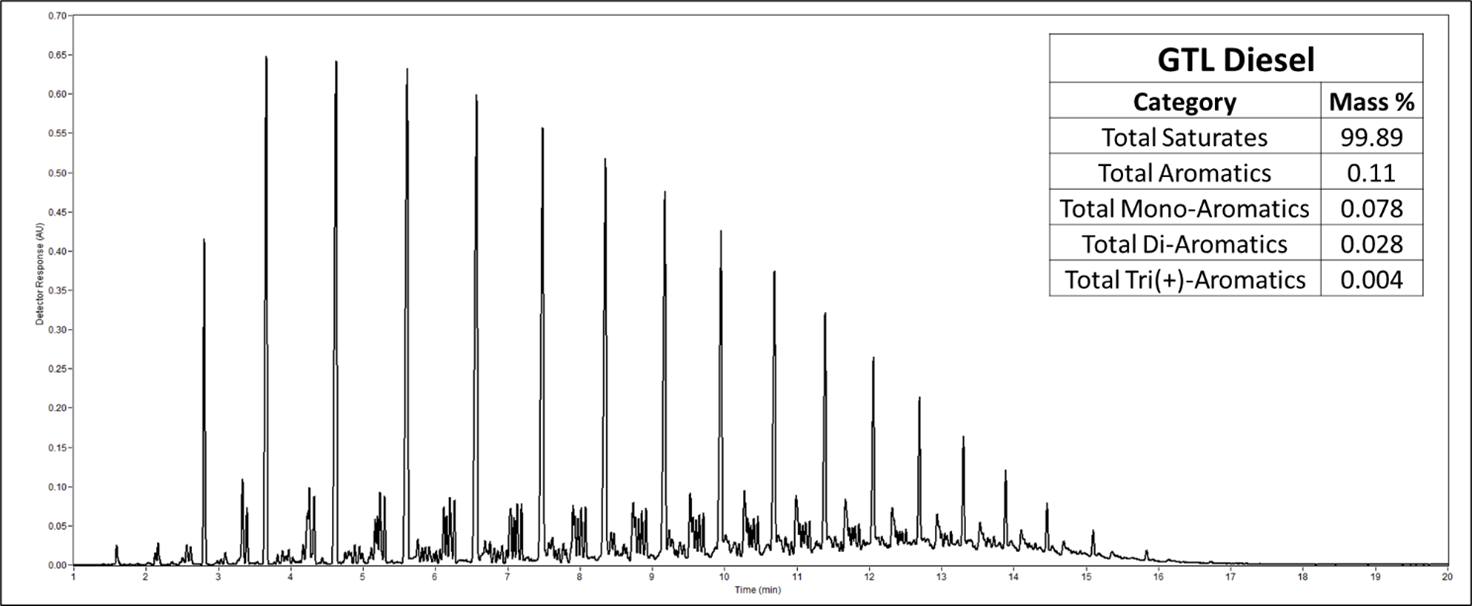





Leave a Reply